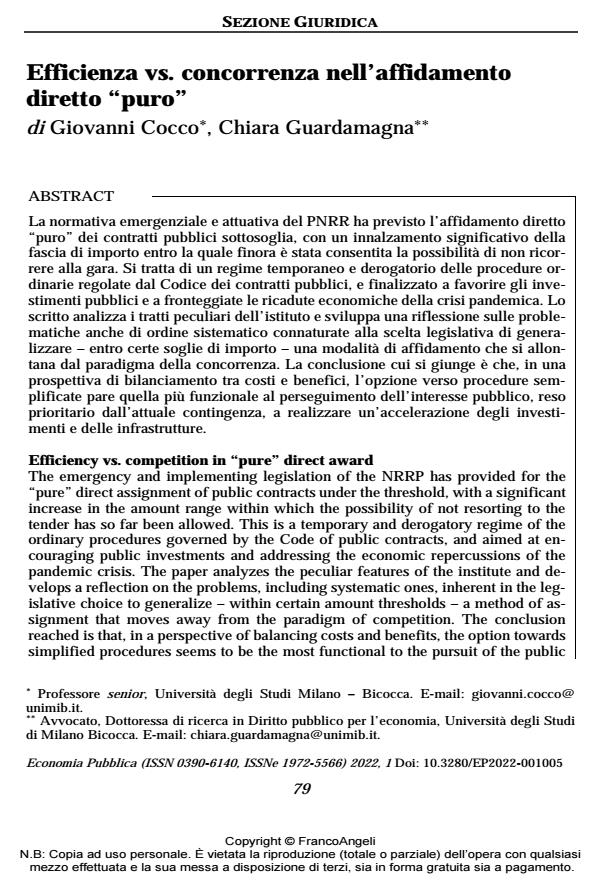Efficiency vs. competition in "pure" direct award
Journal title ECONOMIA PUBBLICA
Author/s Giovanni Cocco, Chiara Guardamagna
Publishing Year 2022 Issue 2022/1
Language Italian Pages 26 P. 79-104 File size 135 KB
DOI 10.3280/EP2022-001005
DOI is like a bar code for intellectual property: to have more infomation
click here
Below, you can see the article first page
If you want to buy this article in PDF format, you can do it, following the instructions to buy download credits

FrancoAngeli is member of Publishers International Linking Association, Inc (PILA), a not-for-profit association which run the CrossRef service enabling links to and from online scholarly content.
The emergency and implementing legislation of the NRRP has provided for the "pure" direct assignment of public contracts under the threshold, with a significant increase in the amount range within which the possibility of not resorting to the tender has so far been allowed. This is a temporary and derogatory regime of the ordinary procedures governed by the Code of public contracts, and aimed at encouraging public investments and addressing the economic repercussions of the pandemic crisis. The paper analyzes the peculiar features of the institute and develops a reflection on the problems, including systematic ones, inherent in the legislative choice to generalize - within certain amount thresholds - a method of assignment that moves away from the paradigm of competition. The conclusion reached is that, in a perspective of balancing costs and benefits, the option towards simplified procedures seems to be the most functional to the pursuit of the public interest, made priority by the current contingency, to achieve an accelera-tion of investments and infrastructure.
Keywords: public contracts, public procurement, public procedures, direct award, competition, emergency legislation, NRR
Jel codes: K23
Giovanni Cocco, Chiara Guardamagna, Efficienza vs. concorrenza nell’affidamento diretto "puro" in "ECONOMIA PUBBLICA " 1/2022, pp 79-104, DOI: 10.3280/EP2022-001005